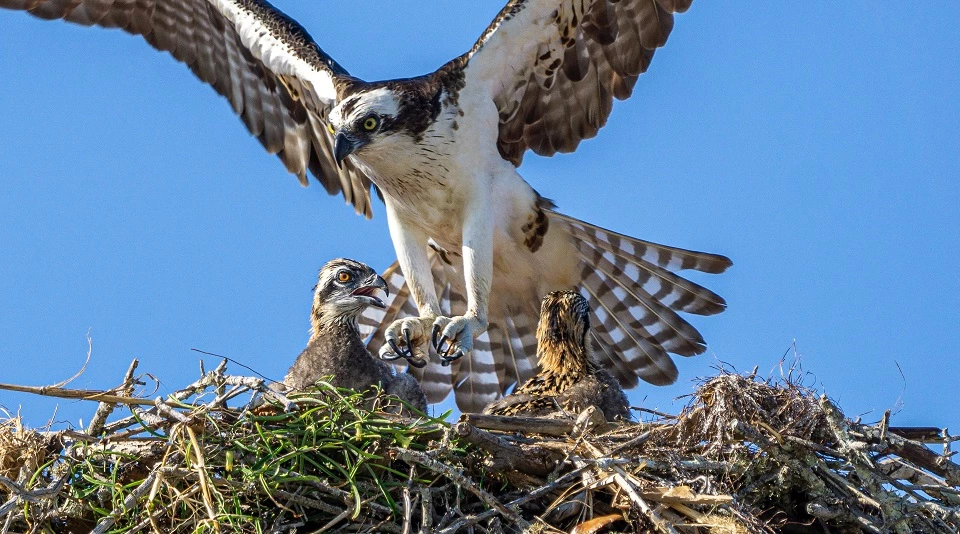
The osprey is a species of raptor that primarily eats fish. NPS/Murphy Ospreys are found on every continent except Antarctica and can be seen in many areas of Gulf Islands National Seashore. Commonly mistaken for a bald eagle, osprey’s are smaller reaching a height of 23 inches and a wingspan of 72 inches. With white and brown coloring, the osprey is also distinguishable from other raptors by their reversible fourth toe (allowing them to grab prey with two toes in front and two in back) and spines on their feet that help the birds hold on to prey. Osprey can be found on every continent except Antarctica. The variety of osprey found along the Gulf Coast are the North American Osprey (Pandion haliaetus carolinensis); their range can span from southern South America, where they winter, to the Arctic Circle, the furthest extent of their breeding range. They are mostly found in coastal regions, near large bodies of water. Some of the fish osprey commonly catch in Florida and Mississippi include saltwater catfish, mullet, spotted trout, shad, crappie, and sunfish from coastal habitats and freshwater lakes and rivers. Osprey dive feet first once they spot a fish in the water and use their sharp talons to catch the fish. One unique aspect of these birds is their ability to manipulate one of their front talons. By doing so, Osprey are able to gain more control over their captured prey in flight, moving it in line with their body for less wind resistance. Osprey will carry their food back to the nest or to a perch where they can eat, by ripping it with sharp beaks. Nesting in northwest Florida begins around late February and the incubation and nestling period extends into the summer. Nests consist of dead sticks or branches, and are usually in an area with a wide view and high vantage point. Mostly preferring dead trees, they can also be seen nesting on any flat open platform such as, navigation towers, light poles, and platforms near or on the water. While the female osprey is the one who constructs the nest, the males usually use their talons and sharp beaks to break apart materials to bring back to the nest. If you see a nest, keep your distance. Predation for osprey is highest when they’re young. Nest predators include racoons, skunks and snakes and aerial predators include owls and eagles. Osprey chicks not only face predation, sometimes adult osprey incorporate human trash into the nest, such as wire and other cordage, which can get wrapped around the chicks and cause them to die. Osprey were seriously endangered because of the effects of pesticides like DDT in the mid-20th century. Consumption of fish exposed to DDT caused osprey eggshells to thin and decreased their populations. Since DDT and other harmful pesticides were banned in 1972, ospreys have made a comeback in North America. “Osprey.” Audubon, 22 Oct. 2019, https://www.audubon.org/field-guide/bird/osprey. “Osprey.” Florida Fish And Wildlife Conservation Commission, https://myfwc.com/wildlifehabitats/profiles/birds/raptors-and-vultures/osprey/. USFWS Northeast Region Division of External Affairs. “Chesapeake Bay Field Office, U.S. Fish and Wildlife Service.” National USFWS Website, https://www.fws.gov/chesapeakebay/osprey.html. |
Last updated: December 4, 2019
